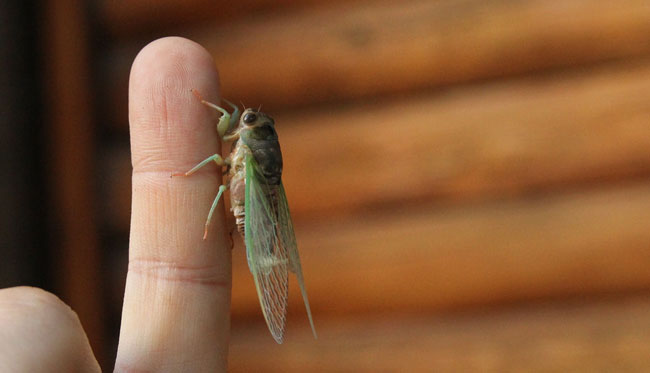Insects on the Menu in High-End Restaurants
By Chris Williams on August 6, 2013.
 Seems like every time there is a big 17-year cicada hatch, we see news stories about eating cicadas and other insects. The media jumps all over that bizarre topic, but in many cultures insects and other arthropods have long been eaten as a food staple, or even as a delicacy. We’re one of the few countries that turn their noses up at the very idea.
Seems like every time there is a big 17-year cicada hatch, we see news stories about eating cicadas and other insects. The media jumps all over that bizarre topic, but in many cultures insects and other arthropods have long been eaten as a food staple, or even as a delicacy. We’re one of the few countries that turn their noses up at the very idea.
Mexico is a good example of how the attitude towards entomophagy (eating insects) is changing. The Aztecs and other ancient civilizations flourished for centuries on a diet that routinely included grubs, grasshoppers, and other edible invertebrates. Even today, in poor, rural communities in Mexico, residents still eat insects largely out of necessity. The more elite Mexicans have regarded insect-eating with disgust and shame. Now, however, credit Mexican chefs with bringing insects back to the mainstream dining table. High-end restaurants are returning to more traditional pre-Hispanic Mexican foods, and top chefs are introducing insects as part of their new “alta Mexicana” (high-end Mexican) cuisine.
Mexico has 300-550 species of insects identified as edible, more than any other country. Most of the insects are caught wild, not farmed, and are then sold at regional markets or trucked into the city. “Much better than the junk food they sell in supermarkets,” said vendor Benjamin Rodriguez, showing off his display of fried crickets and live snails.
Some of the most sought after insect delicacies are water bug eggs (ahuatle) also called “Mexican caviar,” and stink bugs (cumiles). The stink bugs are usually eaten live and are prized for their anise-like flavor with cinnamon undertones. “Eating them in a taco can be a little weird,” offered Mexico City restaurant manager Eduardo Lucero. “They sort of escape into your mouth when you bite down.” But because the wild-caught insect supply is irregular, restaurant prices are often high and an exotic insect appetizer is considered to be a rare delicacy.
Grasshoppers and crickets, however, are two common insects that are readily available and eaten in quantity. These chapulines are typically sautéed in salt and garlic and rolled in tacos or gobbled by the handful. “Kids love them,” said Ricardo Castaneda, a vendor at the San Juan market who sells three types: adults, juveniles, and a version fried in garlic and olive oil.
In its 200-page report, the U.N. Food and Agriculture Organization makes the case that eating insects is not only good for your health (they are loaded with protein), but it is also good for the planet. Armando Soria is a Mexican entrepreneur attempting to farm ant larvae (escamol) for food. “Insects offer delicious flavors,” he says. “They’re a solution to so many problems. They don’t need tractors or irrigation. Just people willing to give them a try.”
[Source: Nick Miroff, The Washington Post, July 13, 2013]
Photo credit: rengber / Foter / CC BY